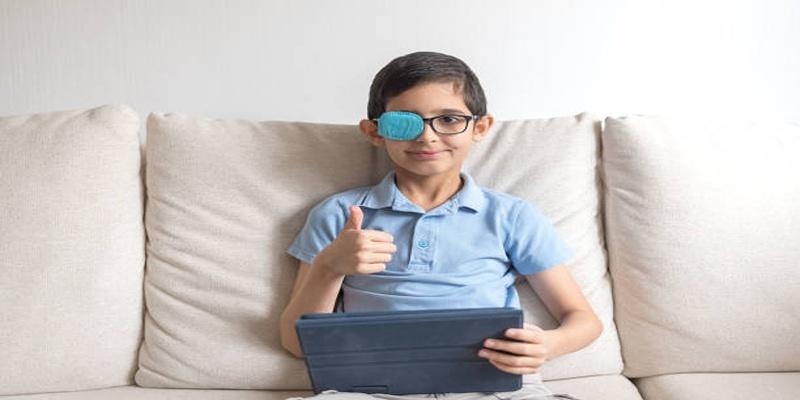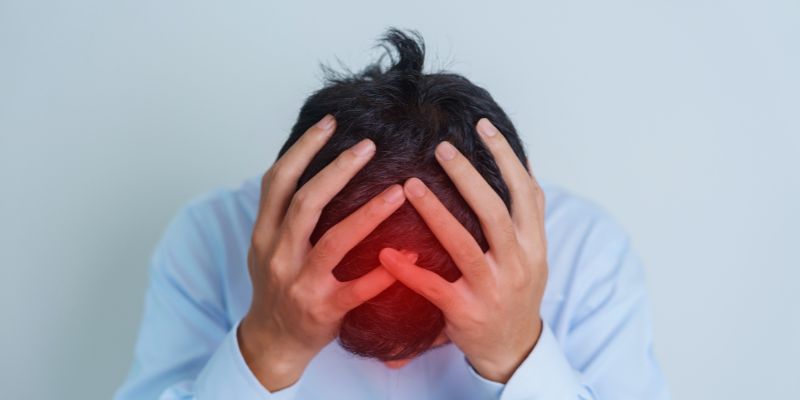Amblyopia (Lazy Eye): Symptoms, Causes and Treatment
Advertisement
Amblyopia, commonly known as lazy eye, is a vision development disorder that typically emerges in early childhood. It occurs when one eye fails to achieve normal vision due to poor coordination with the brain, leading to diminished sight in the affected eye. This condition can result from various causes, including strabismus (misaligned eyes), refractive errors, or visual deprivation. If left untreated, amblyopia can persist into adulthood, significantly impacting quality of life. Early detection and intervention are crucial, as treatment is most effective during childhood when the brain's plasticity is higher.
Signs and Symptoms of Amblyopia
Amblyopia can often go unnoticed, especially in young children, making awareness of its signs and symptoms essential. Below are some key indicators and factors to consider in diagnosing and understanding this condition:
Difficulty in Focusing
The focus abilities of both eyes can be impaired for people who have amblyopia. People with amblyopia develop visual attention deficits because their brains get unbalanced information from their eyes thus favoring the eye with stronger visual reception. The affected eye appears to move off course and the vision becomes obscure.
Poor Depth Perception
The development of accurate depth perception requires normal function of binocular vision and amblyopia prevents it from working properly. People affected by this condition may become uncoordinated when trying to judge space during activities like ball-catching or walking on uneven terrain.
Squinting or Eye Strain
People with amblyopia regularly squint and experience eye strain primarily when in bright areas. The impaired vision leads people to compensate with their strong eye which they use more actively by mistake.
Avoidance of Close Work
During activities involving close work or reading as well as drawing children with amblyopia tend to stay away because visual efforts might cause discomfort or become difficult to execute. The refusal to partake in visual activities will prevent further developmental progress.
Causes of Amblyopia

Amblyopia can develop due to various conditions that disrupt normal visual development in early childhood. Below are some of the key causes explained in detail:
Strabismus
Strabismus, commonly known as cross-eye or lazy eye, occurs when the eyes are misaligned and fail to work together. This misalignment causes the brain to suppress the visual input from one eye to avoid double vision, ultimately leading to amblyopia. Treating strabismus early is crucial to restoring proper eye coordination and preventing long-term vision impairment.
Refractive Errors
Significant differences in refractive errors between the two eyes, such as nearsightedness, farsightedness, or astigmatism, can lead to amblyopia. The eye with the greater refractive error provides a blurred image, which the brain may begin to disregard. Over time, this lack of stimulation weakens the visual development of the affected eye.
Visual Deprivation
Visual deprivation amblyopia arises when something physically obstructs the eye, such as a cataract, droopy eyelid (ptosis), or corneal scar. This obstruction hampers visual input and focus, severely affecting the visual development of the impacted eye. Prompt surgical or therapeutic intervention is often required to prevent permanent vision loss.
Diagnosing Amblyopia
Diagnosing amblyopia involves a thorough evaluation by an eye care professional to identify the underlying causes and assess the severity of the condition. The following steps are commonly used in the diagnosis process:
- Visual Acuity Testing: This test measures the clarity or sharpness of vision in each eye. It helps to identify any significant differences in vision between the two eyes, which is a hallmark of amblyopia.
- Ocular Alignment Check: The eye doctor examines how well the eyes are aligned and working together. Misalignment, as seen in strabismus, is a common contributing factor to amblyopia.
- Refraction Assessment: By determining the precise prescription needed for glasses, this test detects refractive errors such as severe nearsightedness, farsightedness, or astigmatism that can lead to amblyopia.
- Comprehensive Eye Examination: This involves inspecting the structures of the eye, such as the lens and cornea, to rule out physical obstructions like cataracts or ptosis that may cause visual deprivation.
- Family and Medical History Review: Understanding the patient's family history or other medical conditions helps identify potential genetic or developmental factors associated with amblyopia.
Treatment Options for Amblyopia

Treatment for amblyopia typically involves a combination of strategies aimed at strengthening the weaker eye and improving overall vision. Below are some common approaches:
Eye Patching
Eye patching is one of the most widely used treatments for amblyopia. By covering the stronger eye with a patch, the weaker eye is encouraged to work harder, promoting the development of neural connections between the eye and brain. This method is most effective when applied during childhood, as the brain's plasticity is at its peak. Consistent use of the patch, as recommended by a healthcare provider, can lead to significant improvements over time.
Atropine Drops
Atropine eye drops offer an effective alternative to traditional patching for treating vision imbalance. By temporarily blurring vision in the stronger eye, these drops encourage the weaker eye to work harder and improve focus. This non-invasive approach is particularly beneficial for children who may struggle with the discomfort or inconvenience of wearing an eye patch. However, while atropine treatment has proven effective, it requires careful supervision to address potential side effects, such as light sensitivity or mild eye irritation.
Vision Therapy
Vision therapy involves structured exercises designed to improve visual skills and coordination between the eyes. These exercises can be carried out in a clinical setting or at home using digital tools. Vision therapy not only strengthens the weaker eye but also helps reestablish binocular vision, ensuring both eyes work together more effectively.
Corrective Lenses
Specially prescribed glasses or contact lenses can address refractive errors like nearsightedness or farsightedness, which may contribute to amblyopia. These lenses help to focus light properly on the retina, reducing strain on the weaker eye. For some individuals, corrective lenses alone may be sufficient to treat the condition.
Surgical Intervention
For severe cases of amblyopia caused by structural irregularities like cataracts or strabismus, surgery may be recommended. Procedures are tailored to the specific issue, such as realigning the eye muscles in strabismus or removing cataracts. Surgery is often accompanied by other treatments, such as patching or vision therapy, to ensure long-term success.
Conclusion
Amblyopia treatment requires early diagnosis and consistent effort for optimal results. While children respond best to these interventions, adults can also experience improvement with dedicated therapy. Regular follow-ups with an eye care professional are crucial to monitor progress and adjust treatments as needed. Combining multiple strategies, such as corrective lenses, vision therapy, and in some cases, surgical intervention, increases the likelihood of success.
On this page
Signs and Symptoms of Amblyopia Difficulty in Focusing Poor Depth Perception Squinting or Eye Strain Avoidance of Close Work Causes of Amblyopia Strabismus Refractive Errors Visual Deprivation Diagnosing Amblyopia Treatment Options for Amblyopia Eye Patching Atropine Drops Vision Therapy Corrective Lenses Surgical Intervention ConclusionAdvertisement












